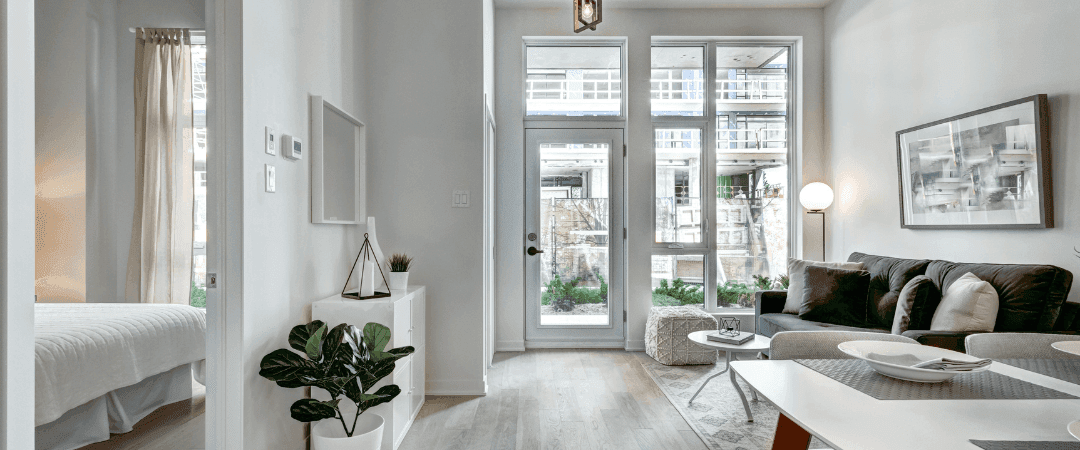
4 Steps to Complete Before Renting Out a Room in Your Home
Putting a room or space in your home up for rent can be a great source of additional income as you work towards financial independence. Here are some important things to consider before you get started.
Advantages of Renting Out a Room in Your Home
Passive Income: Few sources of passive income are truly passive, but renting out a room in your home gets pretty damn close. Advertising, finding, contracting and maintaining a tenancy with the right tenant (emphasis on right tenant!) is a straightforward process that provides stable and predictable additional income.
Meet New People: Renting out a room in your home is an opportunity to meet new people and learn about new things. Whether learning about another country from an international student or learning about another profession from someone that has moved nearer their place of work, meeting new people can educate and even open doors.

Disadvantages of Renting Out a Room in Your Home
- Inconvenience: Having a stranger walk around communal areas of your home isn’t for everyone. For those raising a growing family, this idea is probably even less appealing. What’s more, while reliability of income can be reasonably assured through proper reference checks, there are no guarantees on the behaviour and manners of tenants. To a point, this can be a bit of a lottery.
- Unreliable Tenants: Without proper checks (and even with them) income isn’t a cast-iron guarantee. Recent rent moratoriums and controls show us that government interventions can change the game. In addition, inadequate checks of a tenant’s financial status can leave live-in landlords with a serious legal headache.
- Insurance: Home insurance premiums will increase if you take on a lodger. This proportional increase will vary according to the risk in the area you live in. (Side note: I found the increase in insurance premium to be very small for one lodger).
4 Steps to Complete Before Renting Out a Room in Your Home
The advantages and disadvantages of renting out a room in your home will vary enormously according to your personal circumstances and your location. When weighing these pros and cons, it’s also worth thinking about the logistical steps involved in setting up a rental arrangement. In my view, the 4 below steps are the most important things to consider before taking the leap.

Establish whether having lodgers in your home is for you
Rental income is a fantastic source of passive income. It monetizes your spare space and makes that mortgage begin to work to your advantage.
But despite the income benefits, having lodgers in your house isn’t for everyone. So before you do anything else, make sure you’re comfortable – or at least aware – of what this proposition entails.
Tip: If you’re unsure whether renting out a room in your home is for you, it’s an option to proceed on a rolling monthly basis. That way, if it isn’t working for you, you can retain the flexibility to end the arrangement without months of contractual commitment ahead of you.
Before you start advertising your space, you need to ‘renter proof’ it. That means ensuring everything that’s part of your offering is in good working order, but it also means taking a few precautions to de-risk the proposition of renting out space in your home.
My own experience of letting rooms in my property has been overwhelmingly positive. I have had very few tenants whom I considered to be unreliable and I’ve made some friends along the way. But there are always risks.
That’s why you should take some time to shore things up in the property. That might mean adding a lock to your own room and ensuring items with high financial and sentimental value to you are stowed away securely.

Figure out what to charge and how to advertise
Check out your local rental market to get a good sense of where your proposition stands on price. It will become quickly apparent where your room to rent should sit within the market. If it benefits from its own bathroom, for example, that tends to give good leverage for a higher price, while if it’s a single bed ‘box room’ you’ll be competing at the lower price end of the market.
Having done your internet research on market value, you’ll probably have figured out the most popular websites for advertising rooms to rent. Personally I have always used iROOMit. It’s a big national platform that delivers a good breadth of choice for prospective tenants. It also has a search function for landlords to identify people looking for rooms in the local area and go ahead and contact them.
Tip: Make sure you’ve got clear photos for the advertisement, emphasizing the standout factors. If your property is close to local amenities, schools, shops and that brilliant local gym, mention it! And don’t forget to make clear the security deposit amount you will be requesting in your advertisement. This can be a game changer for tenants, so it’s best to be upfront so you’re not wasting anybody’s time.

Verify identity, proof of income and get references
You will get an instinct for whether somebody viewing the property is the right fit for your room. Sometimes it’s important to use your gut in making this assessment. Respectfully ask questions and find out about their background – and be on the lookout for any gaps in their story.
Assuming you feel the tenant is the right fit for the room and you both want to proceed, it’s important to get identity verification, proof of income and references. A copy of a passport or driving license can be taken as identity verification and contact details can be taken for previous landlords and their current employer for references. Be sure to speak to them over the telephone.
An additional option is to carry out a tenant credit check. I don’t personally do this (at my own risk) as I think my reference requests are sufficient proof of their reliability.
Use a written tenancy agreement
This is fundamental. Draft a standard tenancy agreement document, to be signed by both parties before entering into the renting arrangement.
